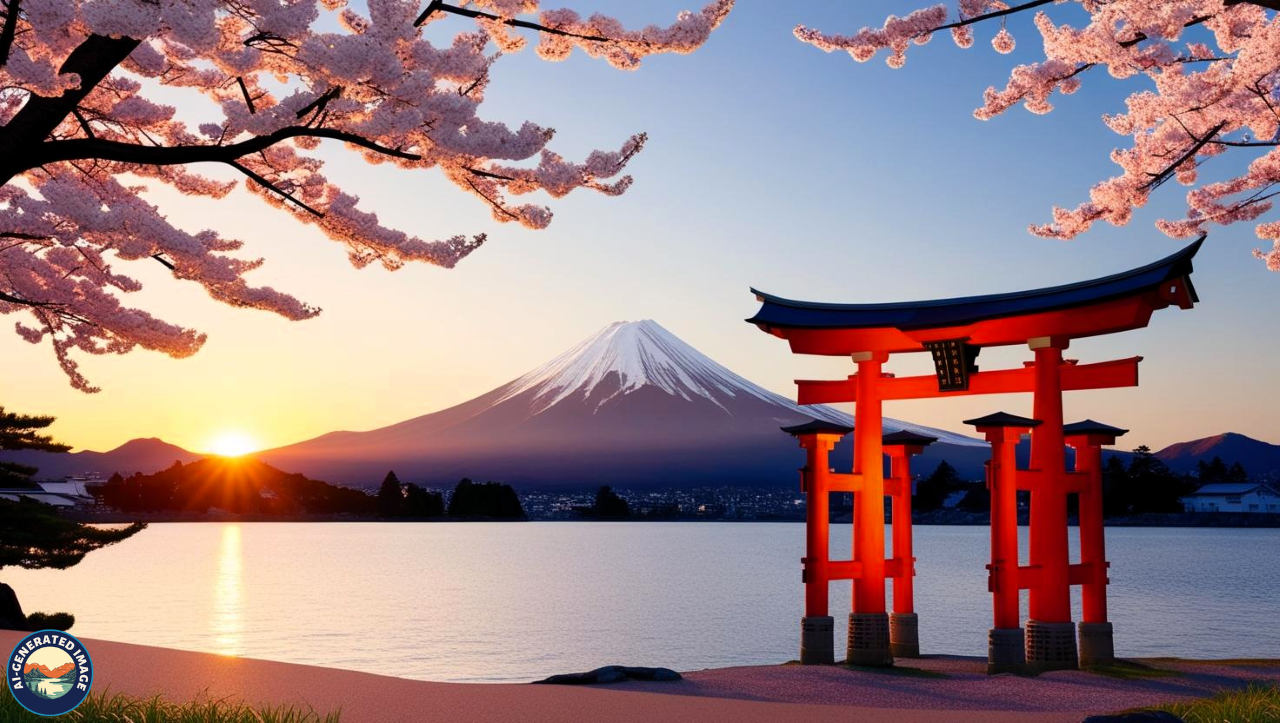Introduction
Japan is a country that captivates the imagination like few others. It’s a land where the echoes of samurai culture and centuries-old shrines harmonize with the pulse of ultra-modern cities and high-tech innovation. From tranquil Zen gardens to the glowing neon districts of Tokyo, Japan offers an unmatched range of experiences that blend the past, present, and future. Whether you’re drawn by the rich heritage, incredible cuisine, or cutting-edge lifestyle, Japan offers a journey like no other. This guide explores Japan’s deep historical roots, vibrant cities, cultural practices, cuisine, natural wonders, travel advice, and more, helping you discover what makes this island nation so uniquely captivating.
Unfolding the Past: A Brief Look at Japan’s History
Japan’s past is rich with dramatic change, resilience, and artistic brilliance. The nation’s earliest known period, the Jomon era, saw the rise of hunter-gatherers who created some of the world’s oldest pottery. Over time, the Yamato dynasty laid the foundation for Japan’s imperial lineage, which continues today as the world’s oldest hereditary monarchy.
During the feudal era, powerful clans ruled the land under a system led by shoguns and protected by samurai warriors. The Edo period (1603–1868) marked a time of internal peace, artistic development, and strict isolation from the outside world.
The tides turned with the Meiji Restoration, when Japan embraced modernization and opened to Western influence. This launched a rapid transformation into a modern industrial power. After the devastation of World War II, Japan rebuilt itself into one of the world’s most technologically advanced nations, all while honoring its traditions.
Cities You Must Explore
Tokyo: The Dynamic Capital
Tokyo is a dazzling mix of old-world charm and futuristic energy. It’s a sprawling metropolis that never runs out of surprises.
-
What to See:
-
Marvel at ancient spiritual sites like the Meiji Shrine, stroll through the Imperial Palace gardens, and experience the bustle of Shibuya Crossing.
-
Meiji Shrine :
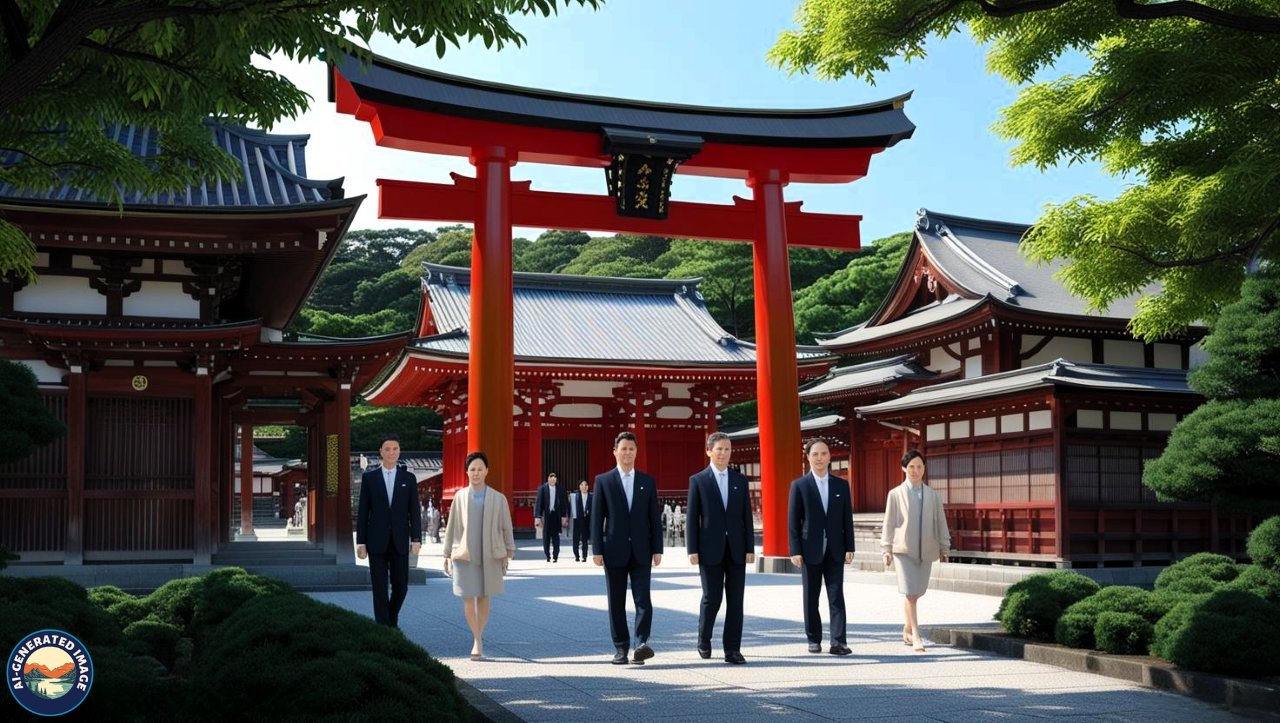
-
Experience the Culture:
-
Explore Akihabara’s tech stores and anime hubs, or visit Harajuku for quirky fashion and youthful energy.
-
Food & Shopping:
-
From high-end malls in Ginza to ramen shops tucked in alleyways, Tokyo is a paradise for shoppers and food lovers.
Kyoto: The Soul of Traditional Japan
Kyoto served as Japan’s capital for over a millennium and still shines as the heart of Japanese culture.
-
Famous Landmarks:
-
Visit Fushimi Inari’s red gates, the Golden Pavilion (Kinkaku-ji), and stroll through Arashiyama’s Bamboo Forest.
-
Fushimi Inari’s red gates :
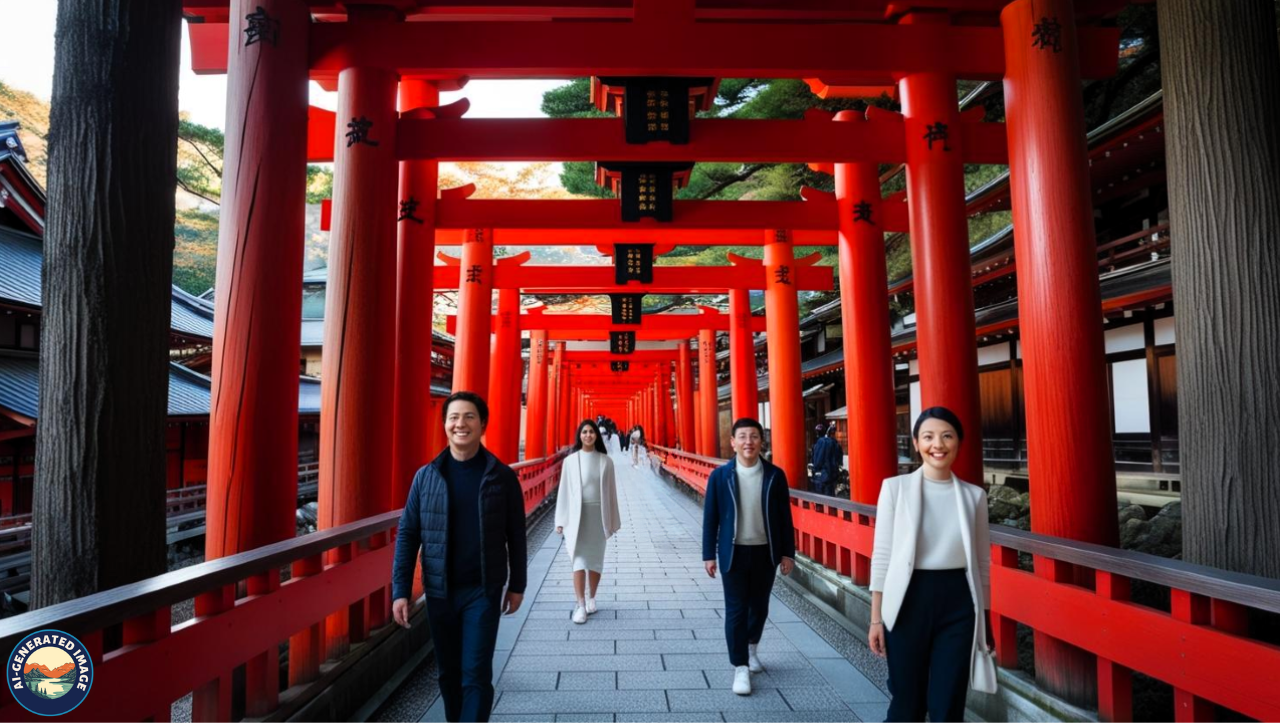
-
Golden Pavilion (Kinkaku-ji) :
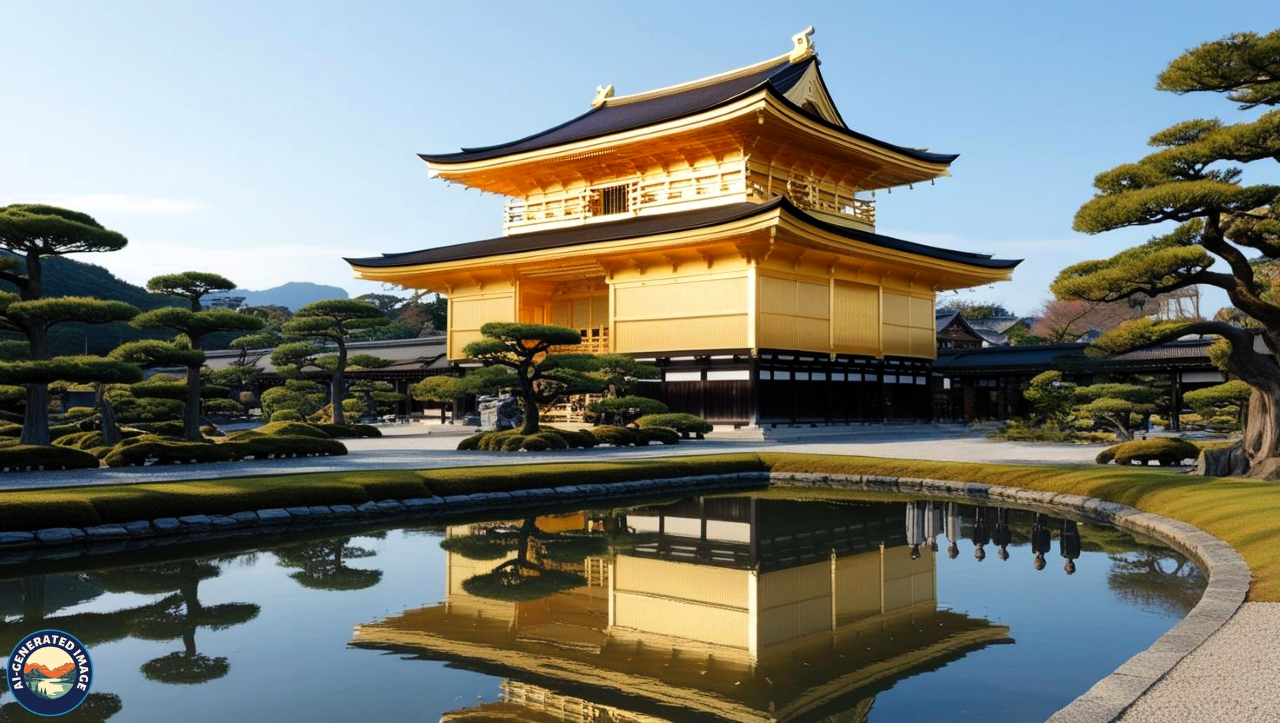
-
Traditional Encounters:
-
Attend a tea ceremony, wear a kimono, and watch a geisha performance in Gion.
-
Seasonal Beauty:
-
Kyoto’s cherry blossoms in spring and colorful foliage in autumn are postcard-perfect.
Osaka: Food, Fun, and Flair
Known for its lively atmosphere and legendary street food, Osaka is Japan’s laid-back, fun-loving city.
-
Local Eats:
-
Try takoyaki (octopus balls), okonomiyaki (savory pancakes), and other local specialties in Dotonbori.
-
Sightseeing:
-
Visit Osaka Castle, and take the family to Universal Studios Japan for a day of thrills.
-
Osaka Castle :
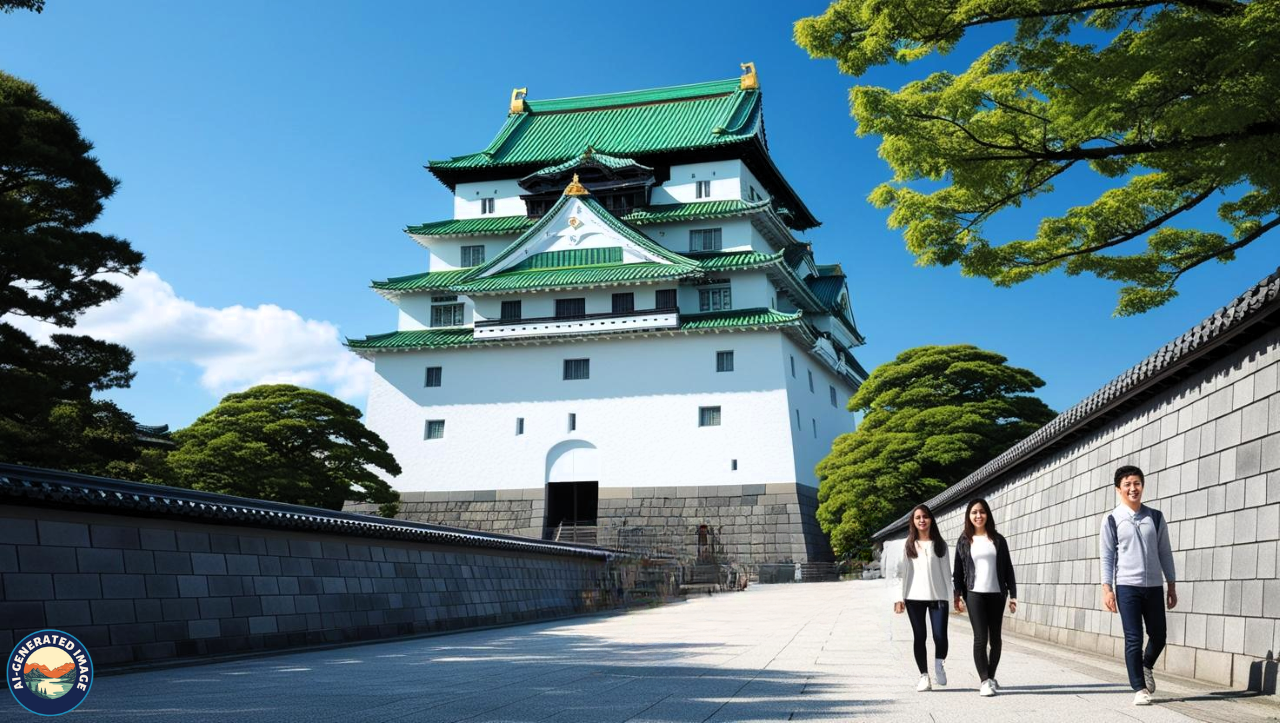
-
After Dark:
-
The nightlife in Namba and Umeda is energetic and diverse.
Hiroshima: From Tragedy to Triumph
Hiroshima stands as a symbol of peace and human resilience.
-
Peace Memorial Park:
-
The Atomic Bomb Dome and the Hiroshima Peace Memorial Museum offer a moving experience.
-
Nearby Gems:
-
Take a ferry to Miyajima Island to see the iconic floating torii gate at Itsukushima Shrine.
-
Culinary Note:
-
Don’t miss the layered Hiroshima-style okonomiyaki.
Sapporo: Winter’s Playground
Located in Hokkaido, Japan’s northernmost island, Sapporo is ideal for winter enthusiasts.
-
Snow Festival:
-
Held every February, it features elaborate ice and snow sculptures that transform the city.
-
Local Cuisine:
-
Sample rich Hokkaido miso ramen, fresh seafood, and premium dairy products.
-
Outdoor Adventures:
-
The area boasts excellent ski resorts like Niseko, perfect for snow sports.
Traditions
Japan’s cultural depth is reflected in every aspect of life, from greetings to festivals.
-
Social Etiquette:
-
Bowing is a common gesture of respect. Taking off your shoes before entering a home or certain restaurants is customary.
-
Major Celebrations:
-
Join locals for cherry blossom viewing (hanami), the lantern-lit Obon festival, and Kyoto’s famous Gion Matsuri.
-
Traditional Attire:
-
Kimonos are worn during holidays and ceremonies, while lighter yukatas are popular during summer festivals.
-
Martial Arts:
-
Disciplines like judo, aikido, and karate are not just sports but a way of life, teaching respect and inner focus.
-
Artistic Heritage:
-
From calligraphy and origami to tea ceremonies and flower arranging, Japanese arts emphasize elegance and harmony.
Discovering Japan’s Natural Wonders
Beyond its cities, Japan offers an abundance of natural beauty.
-
Mount Fuji:
-
The sacred volcano is Japan’s tallest mountain and a beloved icon. Visitors can climb it in summer or view it from nearby lakes.
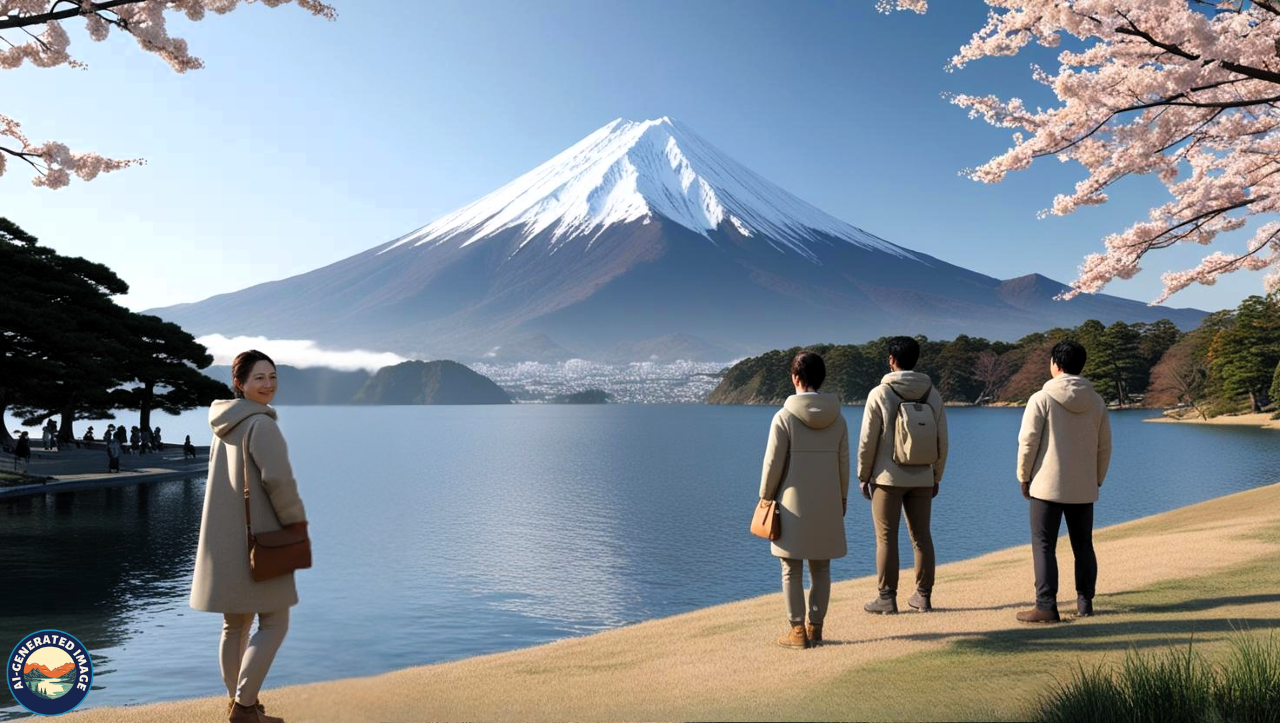
-
Alpine Escapes:
-
The Japanese Alps offer picturesque hikes and mountain hot springs in towns like Takayama and Kamikochi.
-
Relax in Onsens:
-
Natural hot springs are everywhere, from Beppu in the south to Noboribetsu in the north.
-
Okinawa’s Tropical Charm:
-
Okinawa and its surrounding islands offer white-sand beaches, coral reefs, and a distinct culture influenced by the Ryukyu Kingdom.
-
Seasonal Highlights:
-
Each season paints Japan in different colors—cherry blossoms in spring, vibrant leaves in fall, snow-covered temples in winter, and lush greens in summer.
Innovation in Everyday Life
Japan is renowned for making everyday life feel like the future.
-
Transport Excellence:
-
The Shinkansen, or bullet train, connects cities at speeds over 300 km/h, renowned for safety and punctuality.
-
Urban Planning:
-
Cities blend sleek skyscrapers with eco-friendly infrastructure and green spaces.
-
Tech Culture:
-
Robot greeters, high-tech toilets, and vending machines selling everything from umbrellas to hot meals are part of daily life.
-
Pop Culture:
-
Japan’s influence on video games, anime, and manga is global. Akihabara in Tokyo is a paradise for fans.
-
Environmental Focus:
-
Japan is leading in smart city design, sustainable technology, and recycling initiatives.
Savoring Japanese Cuisine
Japanese food is both an art form and a window into the culture.
-
Famous Dishes:
-
Sushi, tempura, ramen, soba, and donburi offer a wide range of textures and flavors.
-
Kaiseki Meals:
-
These multi-course meals, often served in ryokans, showcase seasonal ingredients and refined presentation.
-
On-the-Go Eats:
-
Try onigiri (rice balls), yakitori (grilled skewers), and crepes from convenience stores and street stalls.
-
Regional Specialties:
-
Sample miso butter ramen in Hokkaido, wagyu beef in Kobe, and green tea desserts in Kyoto.
-
Drinks:
-
Enjoy traditional sake, Japanese whisky, and matcha-based teas served hot or cold.
Smart Travel Tips for First-Time Visitors
-
Ideal Seasons:
-
Visit in spring (March–May) for cherry blossoms or autumn (September–November) for foliage. Winters are great for skiing, and summers feature colorful festivals.
-
Getting Around:
-
Use a Japan Rail Pass for intercity travel. For local transit, IC cards like Suica and Pasmo make commuting easy.
-
Language Tips:
-
Basic English works in urban areas. Learning simple Japanese phrases will enhance your experience.
-
Money Matters:
-
Japan still relies heavily on cash. Use ATMs at 7-Eleven or post offices, and carry coins for vending machines and small purchases.
-
Cultural Courtesy:
-
Speak quietly in public, stand on one side of escalators (right in Osaka, left in Tokyo), and always be polite and respectful.
Conclusion
Japan’s ability to honor ancient traditions while leading the world in innovation is nothing short of remarkable. Every temple visit, bowl of ramen, and train ride tells a story of balance between past and present, nature and urban life, silence and spectacle. Whether you’re soaking in a mountain onsen, exploring a neon-lit alleyway, or sharing a meal with locals, Japan offers moments that linger long after your trip ends. It’s not just a place you visit—it’s a place you feel.
FAQs
What is the best time of year to go to Japan?
Spring (March–May) and fall (September–November) are ideal due to mild weather and beautiful scenery. Winter is great for skiing, while summer has exciting festivals.
Is Japan expensive for tourists?
While Japan has a reputation for being pricey, budget travelers can save by using rail passes, eating at casual restaurants, and staying in capsule hotels or hostels.
Will I have trouble if I don’t speak Japanese?
Not at all. Many signs are in English, and people in tourism-related jobs are helpful. Learning a few basic phrases can make your experience even better.
What should I avoid doing in Japan?
Don’t talk loudly in public, avoid tipping, never stick chopsticks upright in rice, and always follow local customs like removing shoes indoors.
Do I need a visa to travel to Japan?
Many nationalities, including those from the U.S., Canada, Australia, and most EU countries, do not need a visa for short-term stays. Check the official website for up-to-date info.

